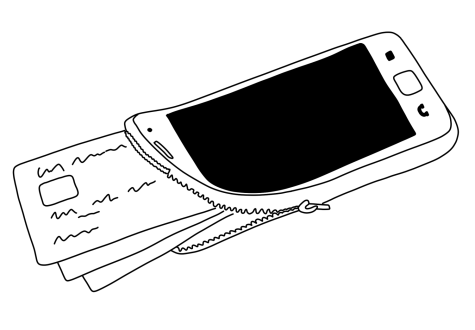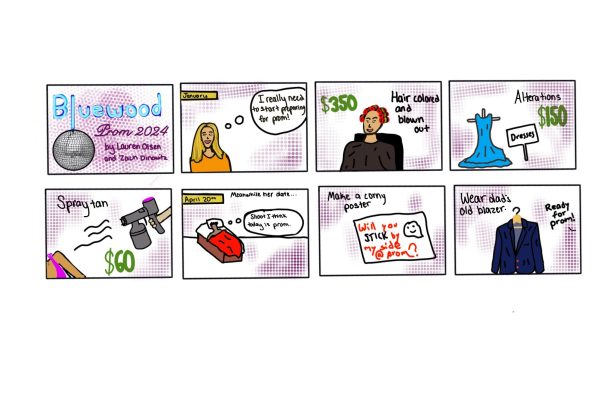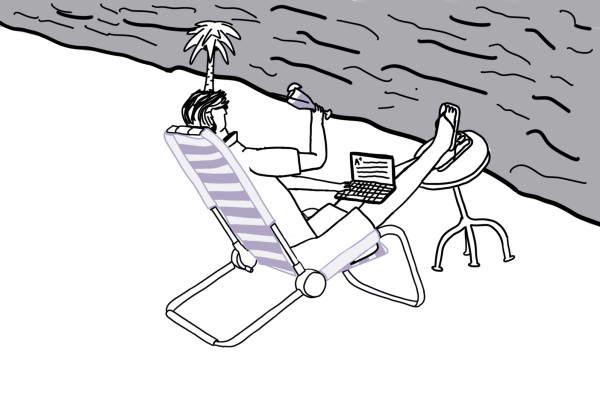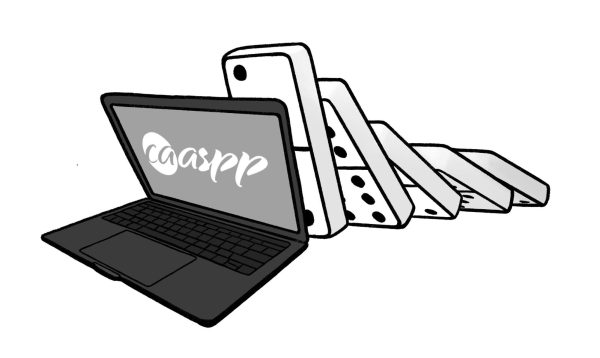The reality of a cashless world
December 18, 2022
One of my most cherished memories as a child was being handed a crisp $5 bill by my parents, and having complete freedom to buy whatever I wanted in a store. I’d firmly grip that cash and make sure not to lose it. To me, that $5 bill felt like the most valuable thing in the world. Now, I can’t even recall the last time I carried cash with me. Whether I want to buy ice cream, a new shirt or perhaps pay back a friend, all of it is done with the simple tap of my phone. And it’s not just me. Over the past decade, a large population of Americans, especially teenagers, have turned to online transaction apps like Venmo and Apple Pay for all of their payments. While relying on technology for payments, it’s important to recognize that Venmo and other digital platforms have desensitized us from understanding the transactional nature of money, thus making it even more critical for teenagers to learn financial literacy. If sending a friend $25 for lunch is as easy as liking their Instagram photo, we’ve lost the ability to develop stronger, more responsible economic thinking.
Online payment transactions emerged in t he early2000s, and have grown to become the preferred mode of spending and transferring money. One benefit of online payment transactions is that they make the lives of consumers much more convenient, as users are able to quickly make purchases and send money. Online transactions can be used to pay for practically anything; coffee, a new sweater or even monthly rent. Consumers don’t have to worry about handling cash, because their money is in one place at all times. A study by Pew research corroborates this as roughly 61 percent of Americans who have ever used PayPal, Venmo, Zelle or Cash App say a major reason for doing so is because of the convenience and ease. With this in mind, the simplicity of these transactions is exactly what makes it a threat to the building of dangerous habits.
he early2000s, and have grown to become the preferred mode of spending and transferring money. One benefit of online payment transactions is that they make the lives of consumers much more convenient, as users are able to quickly make purchases and send money. Online transactions can be used to pay for practically anything; coffee, a new sweater or even monthly rent. Consumers don’t have to worry about handling cash, because their money is in one place at all times. A study by Pew research corroborates this as roughly 61 percent of Americans who have ever used PayPal, Venmo, Zelle or Cash App say a major reason for doing so is because of the convenience and ease. With this in mind, the simplicity of these transactions is exactly what makes it a threat to the building of dangerous habits.
The convenience of apps like Venmo, combined with the lack of financial education for consumers, is a recipe for disaster. Today, transactions have become so simple that there is no requirement for teenagers to understand the nature of them or manage their own finances. Additionally, teenagers are offered very few opportunities to learn how to manage their finances, which in turn leaves them unprepared for when they are older and may need this knowledge. According to a survey from Junior Achievement USA and Citizens Bank, a national program that provides lessons in financial literacy, work and career readiness, and entrepreneurship, 54 percent of teens say they are worried about financing their futures. This feeling of unpreparedness among teenagers has worsened with the new advancements in transactions. With the digitalization and technological change of transactions, it has become easier for teens to spend more money without proper education to help them realize the short-term and long-term effects of their spending.
Ideally, it would be helpful for apps to create restrictions for users under the age of 18, for example, a restriction that would help prevent younger consumers from spending too much in a certain amount of time. Additionally, these apps could create more warning notifications that give users a sense how much money they are spending and at what rate.
Although this is the ultimate goal, it is unlikely that these apps will create changes that can solve the problem. Instead, it is important that teenagers become financially intelligent. That way even if these apps exist, younger users at least know the importance of budgeting their money. Locally, schools should implement a requirement to teach financial literacy. Redwood has classes such as Social Issues which teaches students about sexual and mental health, but there is no required program that teaches students about finance. Even if it was just a short unit of teaching, this would set a base for students’ understanding of money and spending that would hopefully lead to more awareness as the growth of these online transactions continues. Yes, spending money is okay, but spending more money just because it’s easier … that’s where we should draw the line.






















